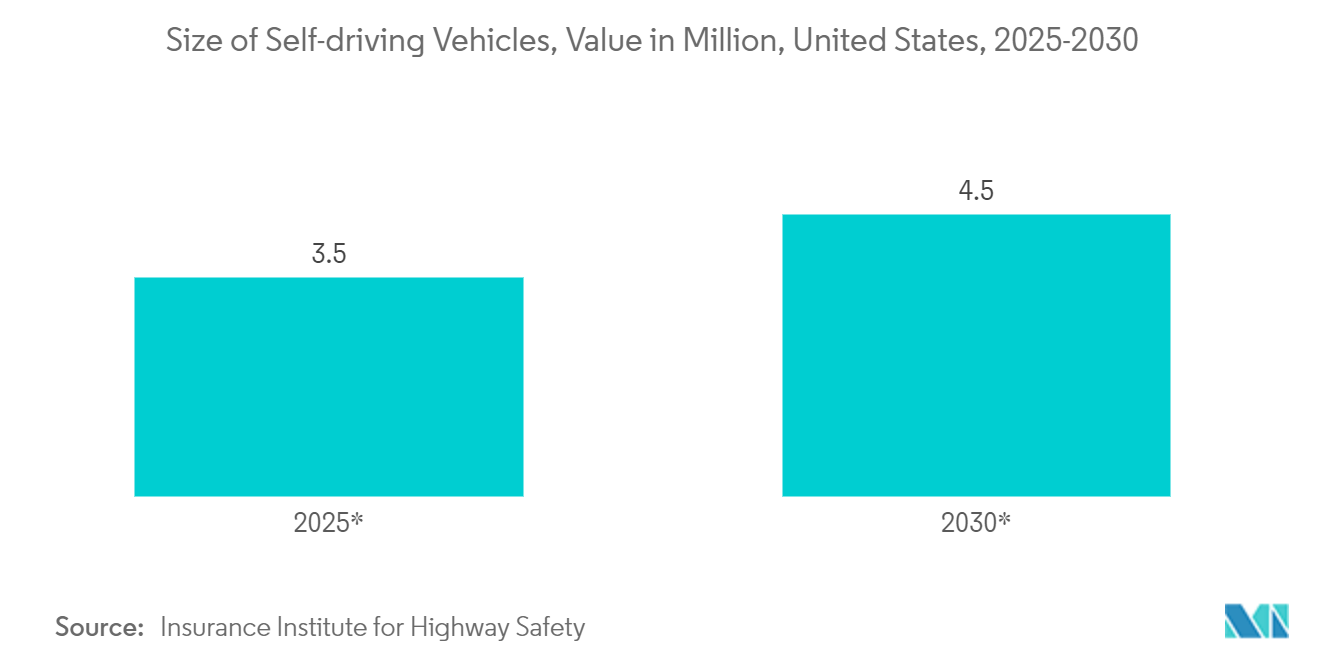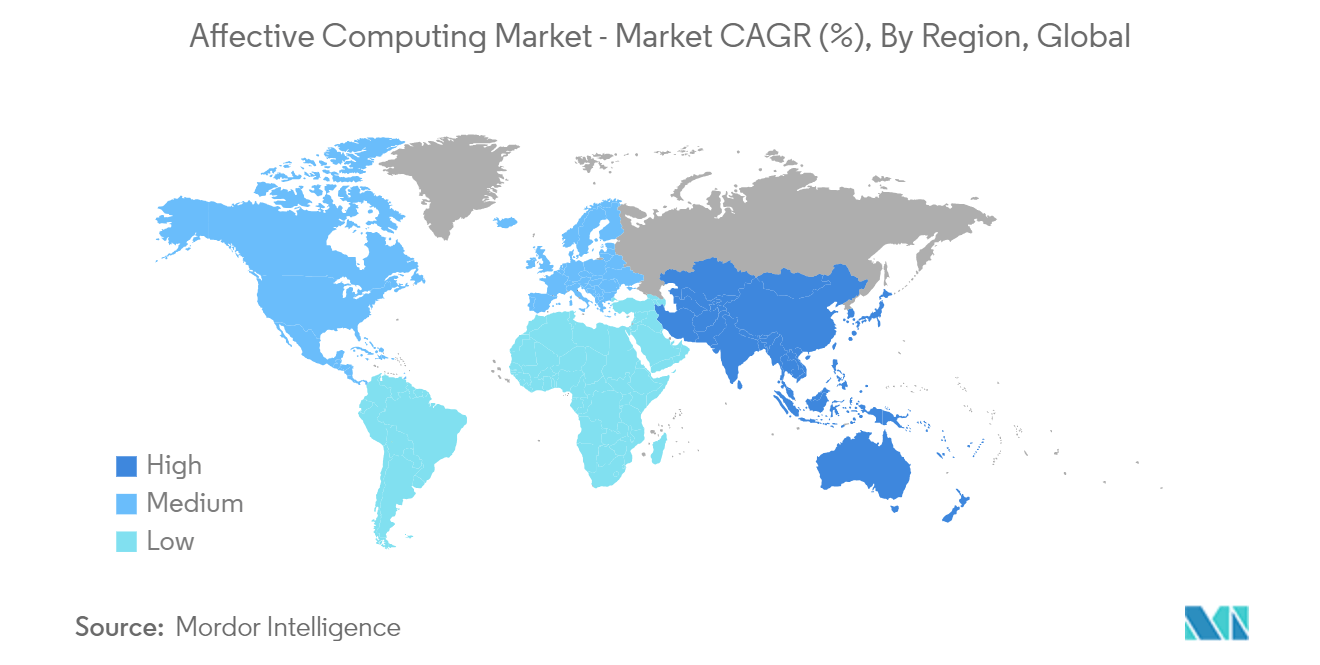Market Trends of Affective Computing Industry
Rising Technology Adoptions in Various Industries such as Automotive
- Currently, some of the most widely used effective computing technologies and solutions are found in the automotive sector. The majority of market participants offer at least one good or service geared toward automobile applications. In the automotive industry, affective computing is frequently used to create Advanced Driver-Assistance Systems (ADAS).
- The two categories of ADAS functions are comfort functions and security functions. The comfort feature is designed to warn the driver by causing alerts like flashing lights, sounds, sensations, or light steering recommendations. In the event that the driver does not respond to a potentially hazardous scenario, the security feature is designed to intervene within the car itself. Brake preloading, seatbelt installation, hood pulling, automatic braking, and avoidance steering are examples of possible maneuvers.
- By notifying and warning the drivers, the key effective computing applications in the automotive industry also aid in reducing accidents. As per the WHO (World Health Organization), it is estimated that 20-50 million people suffer from fatal injuries in traffic accidents each year, killing around 1.3 million people. Pedestrians, motorcyclists, and cyclists are among the most at-risk road users, accounting for more than half of all fatalities. The 2030 Agenda for Sustainable Development sets lofty goals for reducing road traffic injuries, including effective computing technology in the automobile industry, using proven methods to lower the risk of accidents and fatalities.
- Moreover, to track and react to the actions and feelings of drivers and passengers, Eyeris and Affectiva put cameras in the automobiles. Driver drowsiness is monitored via emotional technology. It can also be used to start alarms, postures, and positioning, connect to intelligent seats to increase passenger comfort, prevent driving rage, impatient accidents, etc.
- Further, according to the Insurance Institute for Highway Safety, self-driving cars in the United States are anticipated to reach 3.5 million by 2025 and 4.5 million by 2030. Also, to incorporate Affectiva's automotive technology into SmartEye's ground-breaking interior sensing solution, the company bought Affectiva in 2021. These insights enable the Automakers to enhance safety features to meet Euro NCAP standards. Such a significant rise in technology adoption in the automotive segment would create considerable opportunities for various effective computing solution providers.

North America is Expected to Hold the Largest Market Share
- The North American region has been one of the largest markets for affective computing globally, majorly led by the United States. The area comprises some of the most active research organizations working toward developing innovative, effective computing devices capable of serving several end-user applications, especially in the healthcare, market research, and automotive sectors. Moreover, with the improved infrastructure for artificial intelligence and other advanced technologies, the region consists of various infrastructures that are primarily required to deploy effective computing.
- Also, various organizations actively research new technologies in affective computing. For instance, in September 2022, Researchers from Michigan University's CSE department identified one of their papers as one of the top five to appear in IEEE Transactions on Affective Computing. The researchers suggested new approaches for expanding the scope of representations of speech for emotion to boost recognition performance across datasets.
- Moreover, research organizations such as MIT have also been concentrated in the region, conducting multiple research projects, including Affective Response to Haptic Signals and Automatic Stress Recognition in Real-Life Settings, among others. The university has a department in the MIT media lab called the Affective Computing Group, which majorly researches new methods of communicating affective and cognitive states and inventing personal technologies for improving self-awareness of affective states, which is further anticipated to increase the investments in the region driving the growth of affective computing.
- Over the past decade, several companies emerged from the Affective Computing Group of MIT Media Lab (research laboratory at the Massachusetts Institute of Technology). For instance, Affectiva Inc., a major affective computing company, has established its footprint in the global market. The company has raised over USD 60 million since its inception.
- Many Canadian businesses are concentrating on developing new gesture and speech recognition solutions. The Canadian company GestSure Systems offers a gesture software interface that allows doctors to access patient records on computers in locations other than sterile operation rooms. Also, the company provides hardware that serves as a USB bridge to interchange CT and MRI data with an already installed hospital PC using Kinect. Surgeons can navigate images without using their hands since mouse commands are translated into gestures.
- Additionally, a Canadian-based company, Baanto, has developed ShadowSense Technology, an optical positioning-based touch technology that can be used on multiple touchscreen displays. In March 2022, the company recently announced 27-inch night vision imaging system samples for high-performance military applications.


